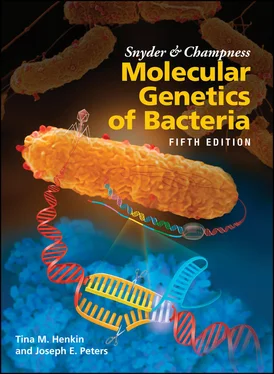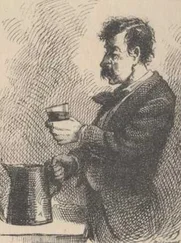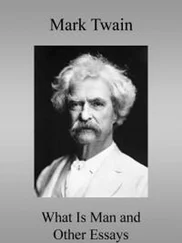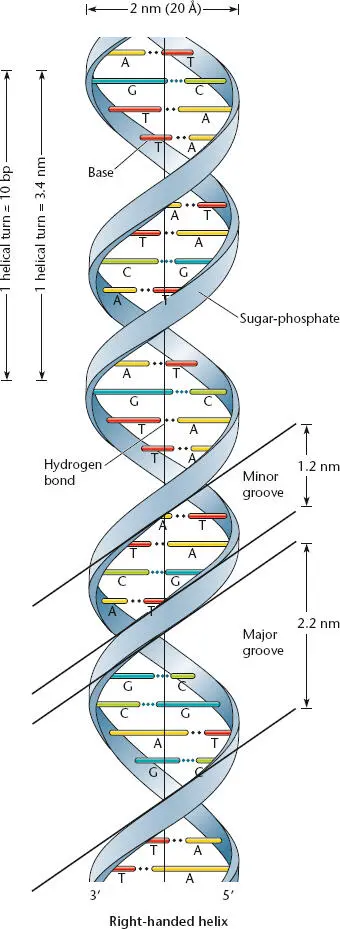
Figure 1.1 Schematic drawing of the Watson-Crick structure of DNA, showing the helical sugar-phosphate backbones of the two strands held together by hydrogen bonding between the bases. Also shown are the major and minor grooves and the dimensions of the helix.
The components of the deoxynucleotides have special names. A deoxynudeoside(rather than -tide) is a base attached to a sugar but lacking a phosphate. Without phosphates, the four deoxynucleosides are called deoxyadenosine, deoxycytidine, deoxyguanosine, and deoxythymidine. As shown in Figure 1.2, the deoxynucleotides have one, two, or three phosphates attached to the sugar and are known as deoxynucleoside monophosphates, diphosphates, or triphosphates, respectively. The individual deoxynucleoside monophosphates, called deoxyguanosine monophosphate etc., are often abbreviated dGMP, dAMP, dCMP, and dTMP, where the d stands for deoxy; the G, A, C, or T stands for the base; and the MP stands for monophosphate. In turn, the diphosphates are abbreviated dGDP, dADP, dCDP, and dTDP, and the triphosphates are abbreviated dGTP, dATP, dCTP, and dTTP. The phosphate attached to the sugar is called the α phosphate, while the next two are called the β and γ phosphates, respectively, as shown in the figure. Collectively, the four deoxynucleoside triphosphates are often referred to as dNTPs.
Phosphodiester bonds join each deoxynucleotide link in the DNA chain. As shown in Figure 1.3, the phosphate attached to the last (5′) carbon of the deoxyribose sugar of one nucleotide is attached to the third (3′) carbon of the sugar of the next nucleotide, thus forming one strand of nucleotides connected 5′ to 3′, 5′ to 3′, etc.
The nucleotides found at the ends of a linear piece of DNA have properties that are biochemically important and useful for orienting the DNA strand. At one end of the DNA chain, a nucleotide will have a phosphate attached to its 5′ carbon that does not connect it to another nucleotide. This end of the strand is called the 5′ end or the 5′ phosphate end( Figure 1.3B). On the other end, the last nucleotide lacks a phosphate at its 3′ carbon. Because it has only a hydroxyl group (the OH in Figure 1.3B), this end is called the 3′ end or the 3′ hydroxyl end.
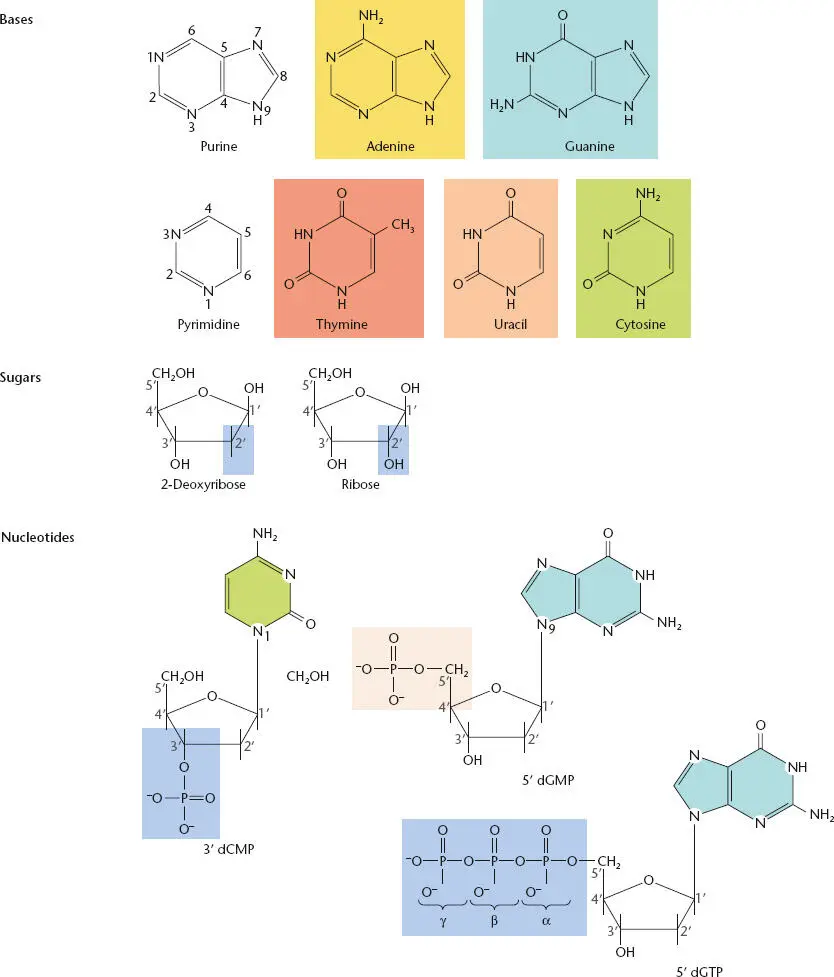
Figure 1.2 Chemical structures of deoxyribonucleotides, showing the bases and sugars and how they are assembled into a deoxyribonucleotide.
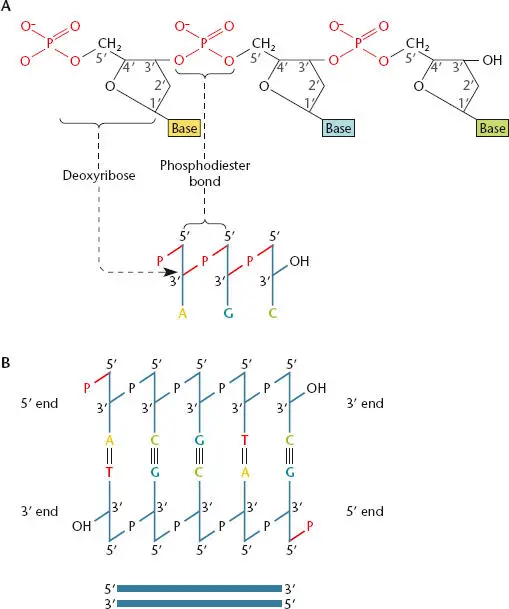
Figure 1.3 (A)Schematic drawing of a DNA chain, showing the 3′-to-5′ attachment of the phosphates to the sugars, forming phosphodiester bonds. (B)Two strands of DNA bind at the bases in an antiparallel arrangement of the phosphatesugar backbones.
The sugar and phosphate groups of DNA form what is often called a backboneto support the bases, which jut out from the chain. This structure allows the bases from one single strand of DNA to form hydrogen bonds with another strand of DNA, thereby holding together two separate nucleotide chains ( Figure 1.3B). The first clue that pairing between specific bases could form the basis for the structure of DNA came from Erwin Chargaff's observation about the ratios of the bases; no matter the source of the DNA, the concentration of guanine (G) always equals the concentration of cytosine (C) and the concentration of adenine (A) always equals the concentration of thymine (T). These ratios, named Chargaff's rules, gave Watson and Crick one of the essential clues to the structure of DNA. They proposed that the two strands of the DNA are held together by specific hydrogen bonding between the bases in opposite strands, as shown in Figure 1.4. Thus, the amounts of A and T and of C and G are always the same because A's pair only with T's and G's pair only with C's to hold the DNA strands together. Each A-and-T pair and each G-and-C pair in DNA is called a complementary base pair, and the sequences of two strands of DNA are said to be complementary if one strand always has a T where there is an A in the other strand and a G where there is a C in the other strand.
It did not escape the attention of Watson and Crick that the complementary base-pairing rules essentially explain heredity. If A pairs only with T and G pairs only with C, then each strand of DNA can replicate to make a complementary copy, so that the two replicated DNAs will be exact copies of each other. Offspring containing the new DNAs would have the same sequence of nucleotides in their DNAs as their parents and thus would be exact copies of their parents.
Antiparallel Construction
As mentioned at the beginning of this section, the complete DNA molecule consists of two long chains wrapped around each other in a double helix ( Figure 1.1). The double-stranded molecule can be thought of as being like a circular staircase, with the alternating phosphates and deoxyribose sugars forming the railings and the bases connected to each other forming the steps. However, the two chains run in opposite orientations, with the phosphates on one strand attached 5′ to 3′, 5′ to 3′, etc., to the sugars and those on the other strand attached 3′ to 5′, 3′ to 5′, etc. This arrangement is called antiparallel. In addition to phosphodiester bonds running in opposite directions, the antiparallel construction causes the 5′ phosphate end of one strand and the 3′ hydroxyl end of the other to be on the same end of the double-stranded DNA molecule ( Figure 1.3B).
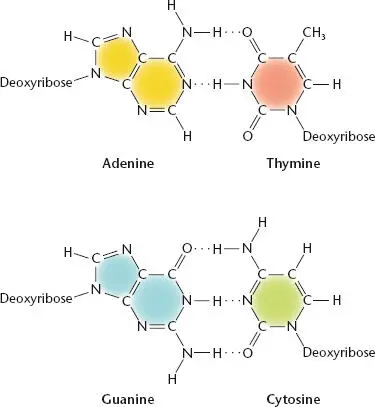
Figure 1.4 The two complementary base pairs found in DNA. Two hydrogen bonds form in adenine-thymine base pairs. Three hydrogen bonds form in guanine-cytosine base pairs.
The Major and Minor Grooves
Because the two strands of DNA are wrapped around each other to form a double helix, the helix has two grooves between the two strands ( Figure 1.1). One of these grooves is wider than the other, so it is called the major groove. The other, narrower groove is called the minor groove. Most of the modifications to DNA that are discussed in this and later chapters occur in the major groove of the helix.
The Mechanism of DNA Replication
The molecular details of DNA replication are probably similar in all organisms on Earth. The basic process of replication involves polymerizing, or linking, the nucleotides of DNA into long chains, or strands, using the sequence on the other strand as a guide. Because the nucleotides must be made before they can be put together into DNA, the nucleotides are an essential precursorof DNA synthesis.
Deoxyribonucleotide Precursor Synthesis
The precursors of DNA synthesis are the four deoxyribonucleoside triphosphates, dATP, dGTP, dCTP, and dTTP. The triphosphates are synthesized from the corresponding ribose nucleoside diphosphates by the pathway shown in Figure 1.5. In the first step, the enzyme ribonucleotide reductasereduces (i.e., removes an oxygen from) the ribose sugar to produce the deoxyribose sugar by changing the hydroxyl group at the 2' position (the second carbon) of the sugar to a hydrogen. Then, an enzyme known as a kinaseadds a phosphate to the deoxynucleoside diphosphate to make the deoxynucleoside triphosphate precursor.
Читать дальше
